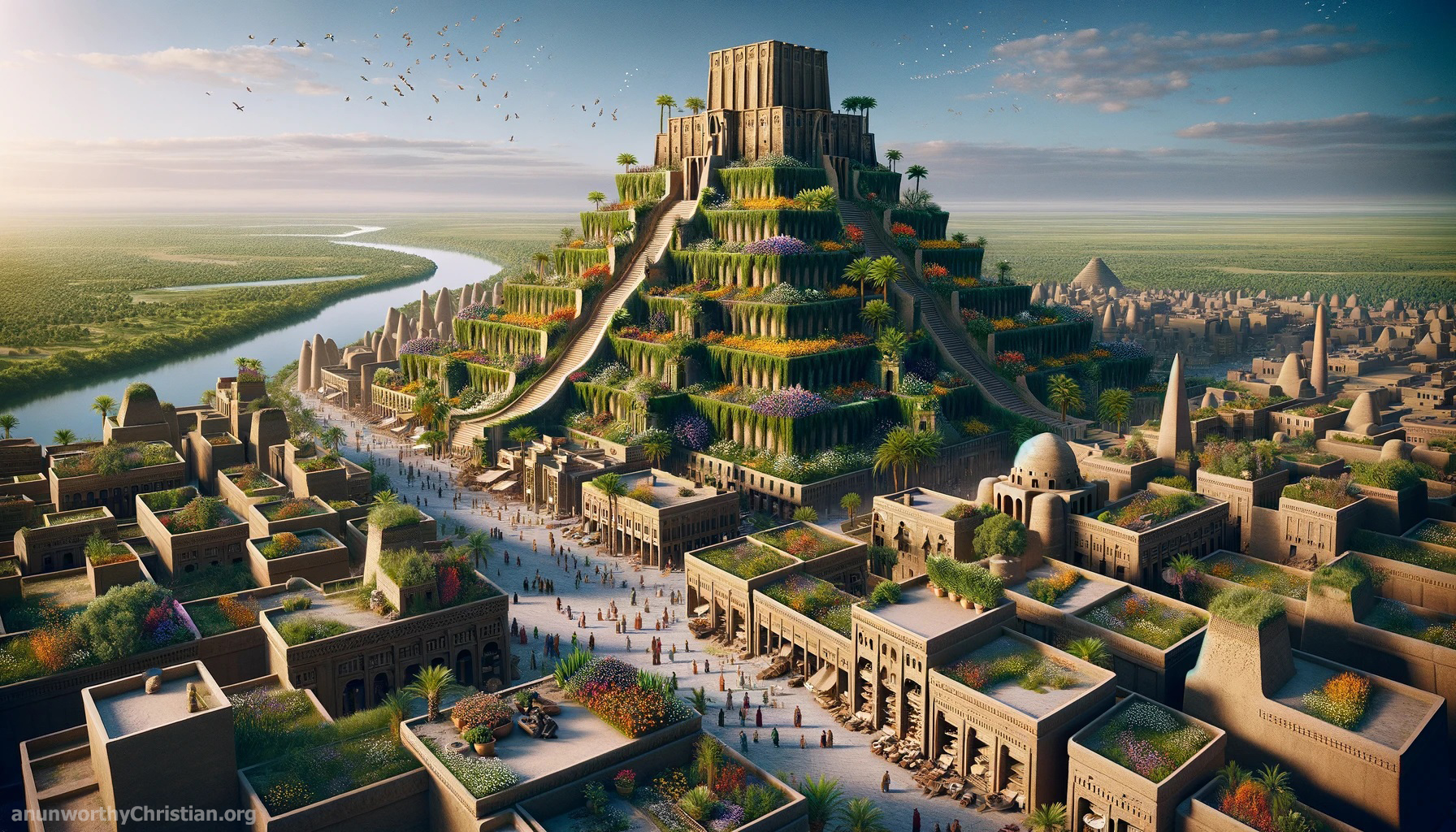Babylon during the time of Daniel, a key figure from the Bible, was one of the most splendid cities in the ancient world, particularly renowned for its grandeur and architectural marvels under the rule of King Nebuchadnezzar II. This period, which is often referred to as the Neo-Babylonian Empire, spanned from 605 to 562 BC.
Babylon, located along the Euphrates River in modern-day Iraq, was the capital of the empire and known for its impressive walls and gates, lavish palaces, and the famous Hanging Gardens, which are one of the Seven Wonders of the Ancient World. These gardens were said to have been built by Nebuchadnezzar for his Median wife, Queen Amytis, to remind her of the green hills and valleys of her homeland.
The city was a center for learning, culture, and religion, with a plethora of temples dedicated to various deities, the chief among them being Marduk, the patron god of Babylon. The ziggurat Etemenanki, believed to be the inspiration for the Tower of Babel story, was a massive temple complex dedicated to Marduk.
During this period, the Babylonian Empire was at the height of its power, having conquered a vast territory that included the Kingdom of Judah. In 586 BC, following a rebellion against Babylonian rule, Nebuchadnezzar destroyed Jerusalem and the First Temple, leading to the exile of the Jewish elite, including Daniel and his companions, to Babylon. This event marked the start of the Babylonian Captivity, a pivotal moment in Jewish history.
Daniel, brought to Babylon in his youth among the exiled Jewish nobility, became renowned for his wisdom, integrity, and ability to interpret dreams and visions, which eventually earned him a high position in the Babylonian and later the Medo-Persian empires. The Book of Daniel contains several key events that took place in Babylon, including Daniel's interpretation of Nebuchadnezzar's dream of a great statue, the fiery furnace incident involving Shadrach, Meshach, and Abednego, and Daniel's own visions of future kingdoms.
The narrative of Daniel in Babylon reflects a period of both cultural exchange and religious tension, highlighting themes of faithfulness, divine sovereignty, and the resilience of the human spirit in the face of adversity. Babylon, with its opulence and power, serves as a backdrop for these stories, illustrating the complexities of life in one of history's most legendary cities.

Babylon during the time of Daniel
Artwork by An Unworthy Christian